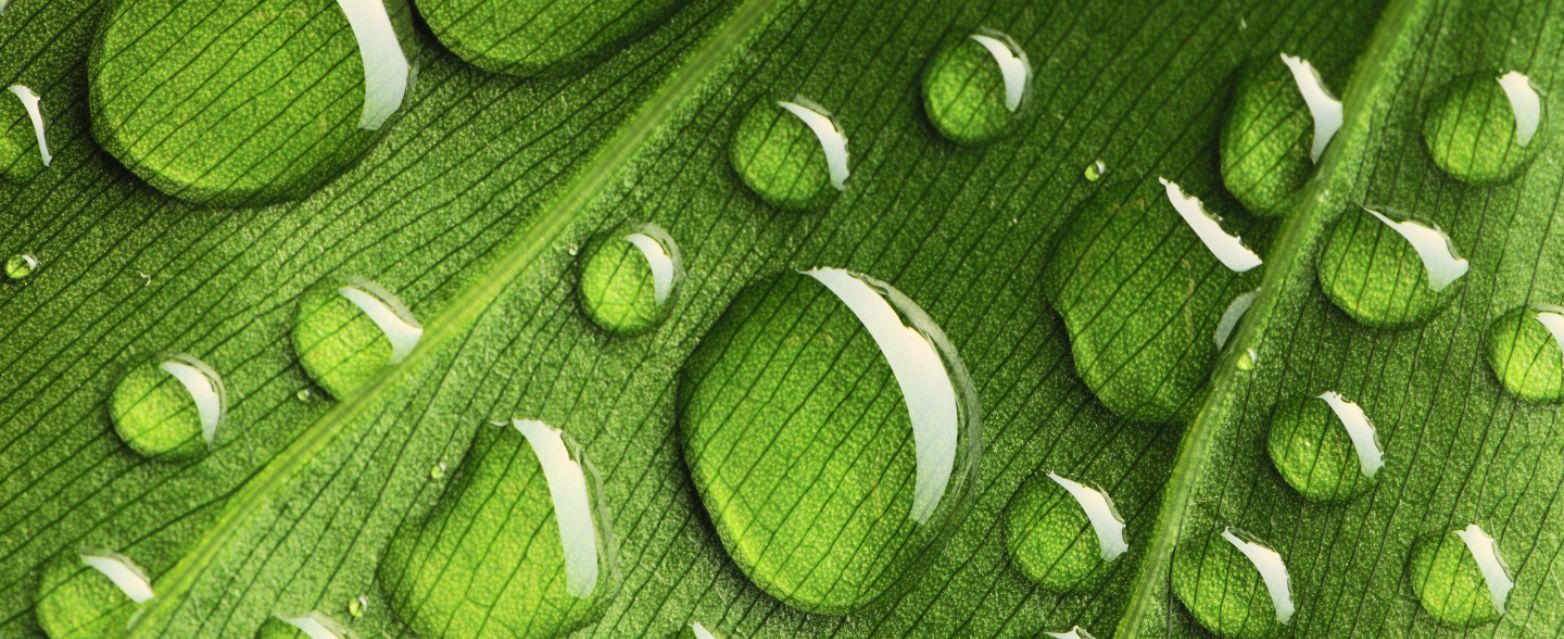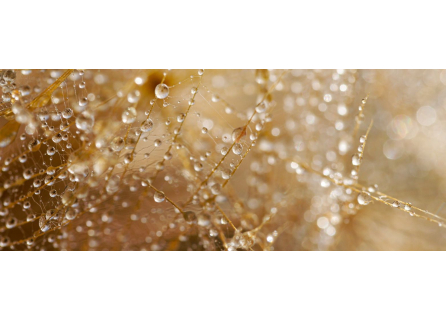
15 Curiosities and interesting facts about water
Let's learn about water
Water is all around us. We drink it, wash things with it, turn it into ice and put it in our juice in summer, swim in it, watch it fall from the sky in various forms, and so on. Water is indispensable to life – the fact that we could not live without it is already a truism. And although we use it so often, there's so much information about water that we don't know.
Let's first recap what we all know about water: It is an odorless, tasteless, and colorless liquid found in nature in liquid, solid, and gaseous form. It is one of the most widespread substances on our planet and forms the Earth's shell called the "hydrosphere". It can also be fresh or salty: salt water is found in oceans and seas, and fresh water can be solid – in glaciers, polar caps, snow, or snow (solid precipitation) and liquid in flowing, stagnant water, and liquid precipitation – rain and groundwater or groundwater. In its gaseous state, water forms clouds and causes air humidity. Being always in motion and having the ability to transform into different states, the process called the water cycle in nature is formed.
Of course, there is much more to say, but here are 15 curiosities about water that you may not know:
1. The Mpemba paradox
The paradox of the Mpemba effect says that under certain temperature conditions, hot water can freeze faster than cold water. One explanation is that hot water evaporates faster, reducing its volume, and a smaller volume of water at the same temperature freezes faster.
This effect is named after Tanzanian schoolboy Erasto Bartholomeo Mpemba (born 1950) whose story became popular in 1963. Unfortunately, his findings have never been replicated under controlled conditions, and there are disagreements over the parameters needed to produce the effect. However, these discoveries come from much older times, being mentioned by Aristotle.
2. Water is sticky
Surface tension is a property of liquids that helps them have that round shape when no other external forces act on them. This happens due to the action of cohesive forces between the molecules of the liquid. In other words, molecules are attracted to other surfaces, even other liquid molecules, as when water droplets join. For this reason, we can say that molecules like to stick to things, especially to each other. This is one of the phenomena to which we owe life because it means that water can carry blood through narrow vessels in the body, often against the force of gravity.
3. Humans are about 70% water
The amount of water that the human body contains changes throughout life. When it begins to "shape", the fetus consists of about 95% water, and by the time it is born, it reaches 77%. The adult human body contains from 60% to 70% water. Most of this water, two-thirds to be exact, is in cells. For example, a 70kg person has around 42 liters of water in their body.
4. Finland is home to the purest water in the world
According to a study conducted by UNESCO in 2003, where water was analyzed in 122 countries, the purest water would be in Finland. The water of 80% of the lakes is of good or excellent quality, they have many resources of pure groundwater, and people can drink it without processing it. Drinking tap water is a privilege that Finns have daily!
5. A person can live almost a month without food, but less than a week without water
People need water to survive, and water is easily lost through the simplest activities we do, such as breathing and sweating. If he is in good health and is in optimal conditions (constant temperature, minimal effort), a man can survive between 3 and 5 days without water.
6. Less than 1% of the water on Earth is drinkable
The planet is 71% covered by water, of which less than 1% is drinking or fresh water and can be consumed in its natural state. More specifically, there are about 1.5 billion cubic kilometers of water on Earth, which is the equivalent of 800 billion Olympic swimming pools. Of this, 97% is salty, 2.1% is enclosed in the polar caps and less than 1% is available as drinking water. Most of the planet's drinking water can be found in glaciers.
7. The densest water always leaves at the bottom of the lake
Water density is highest when water is 4 degrees Celsius. This means that the water at the bottom of the lake always has a temperature of 4 degrees Celsius, while ice and cold water rise to the surface. Because of this, when lakes freeze, the ice remains buoyant on the surface and fish can swim freely below. If water did not have this quality, life could not continue over winter in lakes.
8. Sound travels faster through water than through air
Sound is a variation in pressure, a vibration of molecules. In air, molecules are separated, at greater distances from each other, which is why they interact weaker. The vibration of molecules is transmitted more slowly from one to the other, therefore in the air the speed of sound is lower. Water, however, is denser and water molecules are bound together. Therefore, the vibration of molecules is transmitted more efficiently. The speed of sound in water is 4 times higher than the speed of sound in air.
9. Water as such does not conduct electricity
H2O molecules do not conduct electric current, but this is possible because of the impurities that water contains. Water molecules have no electrical charge, which is why they cannot transmit electrons. Electric current is formed by transmitting electrons from one atom to another. Therefore, without electron transmission, electricity could not travel through distilled water (pure water).
10. Water contains the second most widespread molecule in the Universe
The most common molecule in the universe is hydrogen gas, H2, a compound of the water molecule. Hydrogen consists of a proton and an electron (it is the only known chemical element that has no neutron) and is the simplest element in the universe, which explains its abundance.
11. Water is the only substance that is less dense when it is in its solid state
Nowadays there is a risk that you think there are so many types of water that you no longer know what to choose. You may be sitting there and thinking: But what does it matter, that only water is the same everywhere? We, however, assure you that this is not the case at all.
12. Water is a factor that determines the existence of life forms
Everywhere there is liquid water on Earth, there is life. Even if the water is close to boiling temperature. For example, there is a hot ocean beneath the icy crust of Saturn's moon, Encelades, probably lying on a layer of rock. Because hydrothermal vents at Earth's ocean floor are considered one of the most plausible candidates for where life on Earth began, astrobiologists believe Enceladus is a good place to look for extraterrestrial life. There is ice at the poles of the Moon, at the poles of Mars and Mercury.
13. Rapid consumption of a large amount of water can lead to water poisoning
Water poisoning occurs when water dilutes sodium levels in the blood and causes a water imbalance in the brain. Water poisoning is most likely to occur during periods of intense athletic performance.
14. All the water on Earth ended up here in comets and asteroids
Some theories say this would have happened 4.5 billion to 3.8 billion years ago.
15. Antarctica has been covered by ice for more than 30 million years
Currently, Antarctica is covered with 10 trillion tons of snow and ice. At 14 million square km, it is the fifth largest continent by area. About 98% of Antarctica's surface is covered by a blanket of ice with an average thickness of 1.6 km. The greatest thickness of this layer reaches 4.8 km.
These are just a few curiosities about water. There is still a lot of interesting information that water has to offer, being a substance that has accompanied us throughout the existence of life. All this helps us better understand how such a simple thing, which we experience in different forms every day, can be so complex at the same time. It is not for nothing that I said at the beginning that it is indispensable to life.

